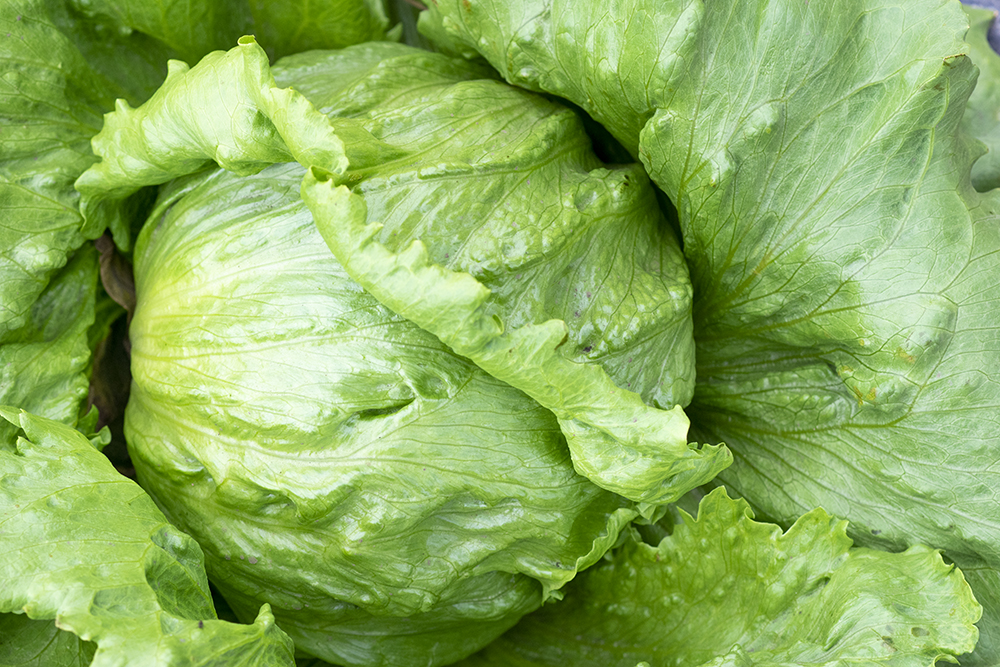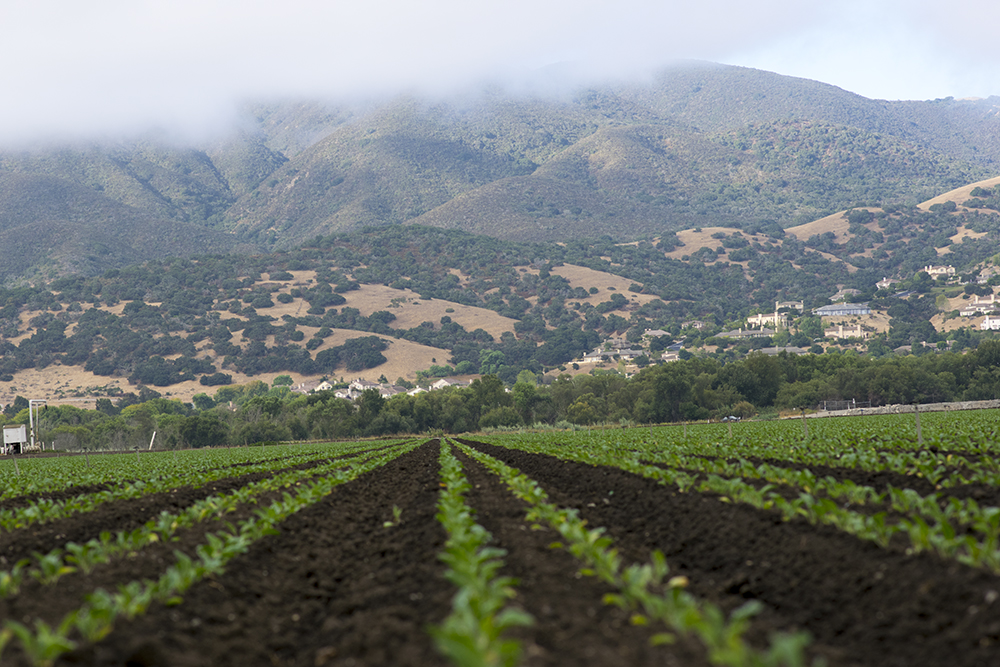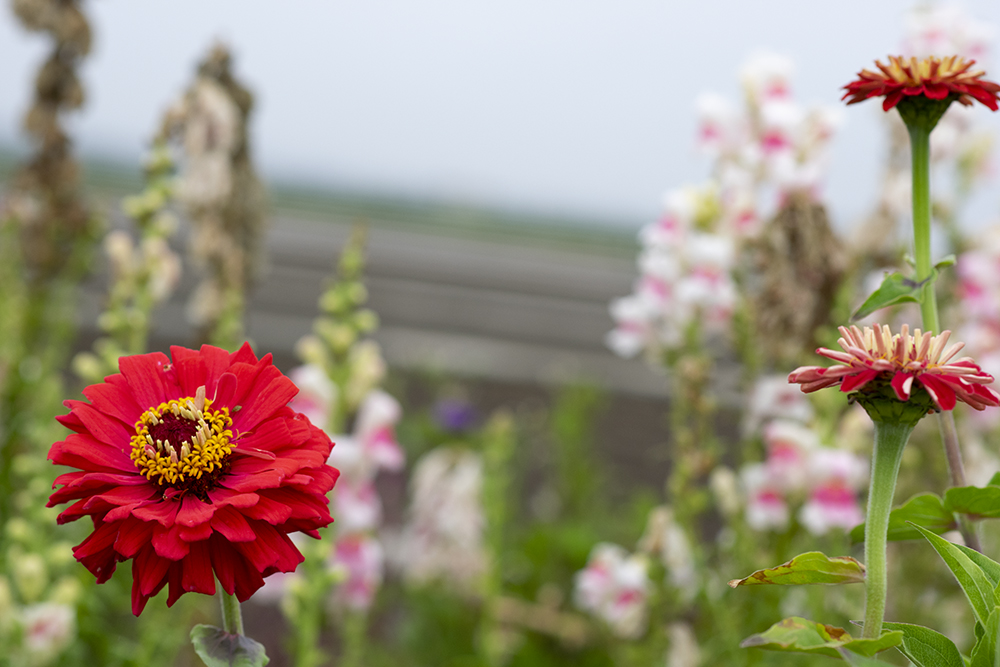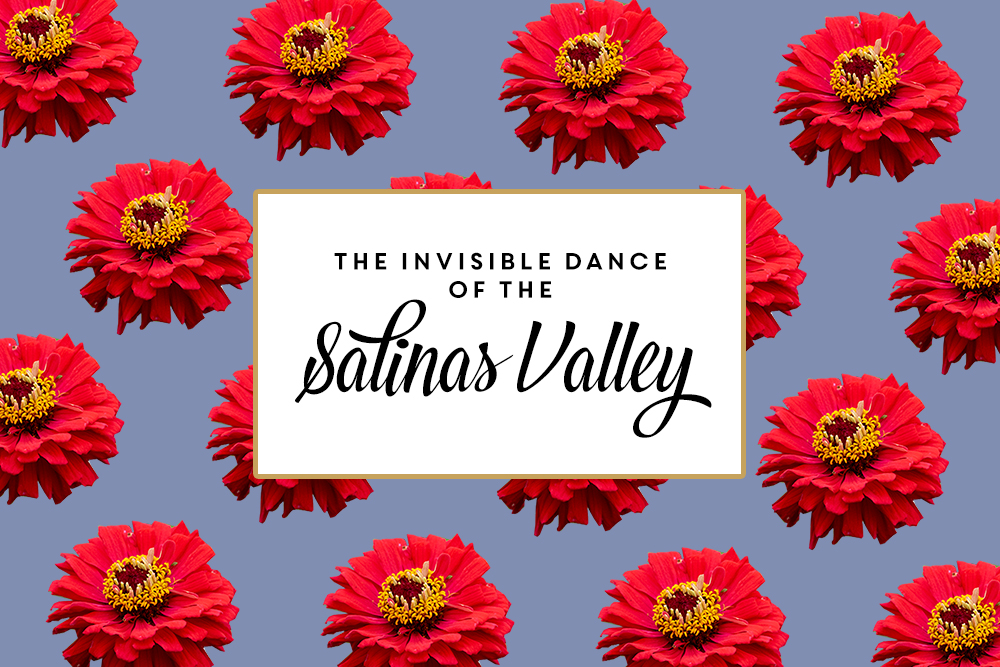It is the first nine feet above the ground that hosts a flurry of energy. Sun, wind, moisture, and the photosynthesis of vegetation are emitting and receiving energy transfers constantly. It is in those nine feet where humans and animals reside, but it is also in that magical space where our food is grown.
Out in the fields, this invisible dance is part of the process of growing our food. Regional factors like proximity to geographic areas and elevation define the choreographic movements of solar radiation, wind energy, and moisture. Sometimes all these factors combine to create a dance that is markedly unique for an area and oftentimes breathtaking. This is what we call a microclimate. The Salinas area has a magical one, and with the happy accident of economy and history, this valley incubates the largest summer growing area of leafy greens, known as the nation’s salad bowl.

Last year I experienced the dance of the Salinas Valley, and it was indeed unique from anything I had known. Located only 8 miles off the ocean, the wind plays its part in ushering in cold surface water from the Pacific with a resulting fog that shrouds the valley throughout the morning. It departs in the afternoon allowing the sun to step in and radiate the ground. This fog last around 5 hours daily.
Now, Salinas’s microclimate didn’t always host the leafy greens and strawberries that now dominate the economy. As railroad infrastructure was built in the late 1880’s, lands were irrigated and underwent the transformation of livestock grazing on pasture to row crops of sugar beets, grapes, etc. The economy later shifted to leafy greens when sugar beet tonnage and value dropped while demand for western lettuce increased. The success of produce in the Salinas valley reached its peak in the roaring 20’s and held its own in the subsequent depression of the 30’s.

I remember that the Gabilan Mountains to the east of the valley were light gay mountains full of sun and loveliness, and a kind of invitation, so that you wanted to climb into their warm foothills almost as you want to climb into the lap of a beloved mother. -from “East of Eden”
When you drive through the area with verdant fields flanking the road on each side and the golden hills creating a visual contrast, you can sense the history and beauty of the area. It is no wonder that with the large aquifer underneath the surface and the magical microclimate above, the biggest produce names have taken up their home in the valley. They only migrate from this paradise during the winter when growing transfers to the warm Yuma valley to maintain a year-round produce supply.
Before I visited the area, I was told it was special and something I’d have to see for myself. Indeed, the invisible movement of energies and careful choreography of nature has created an area that author John Steinbeck alluded to as Eden. Could it be that the Salinas Valley mirrors the illusive garden of the Old Testament? After standing in the fields and drinking in the magical dance of the microclimate, I’d like to think so.





